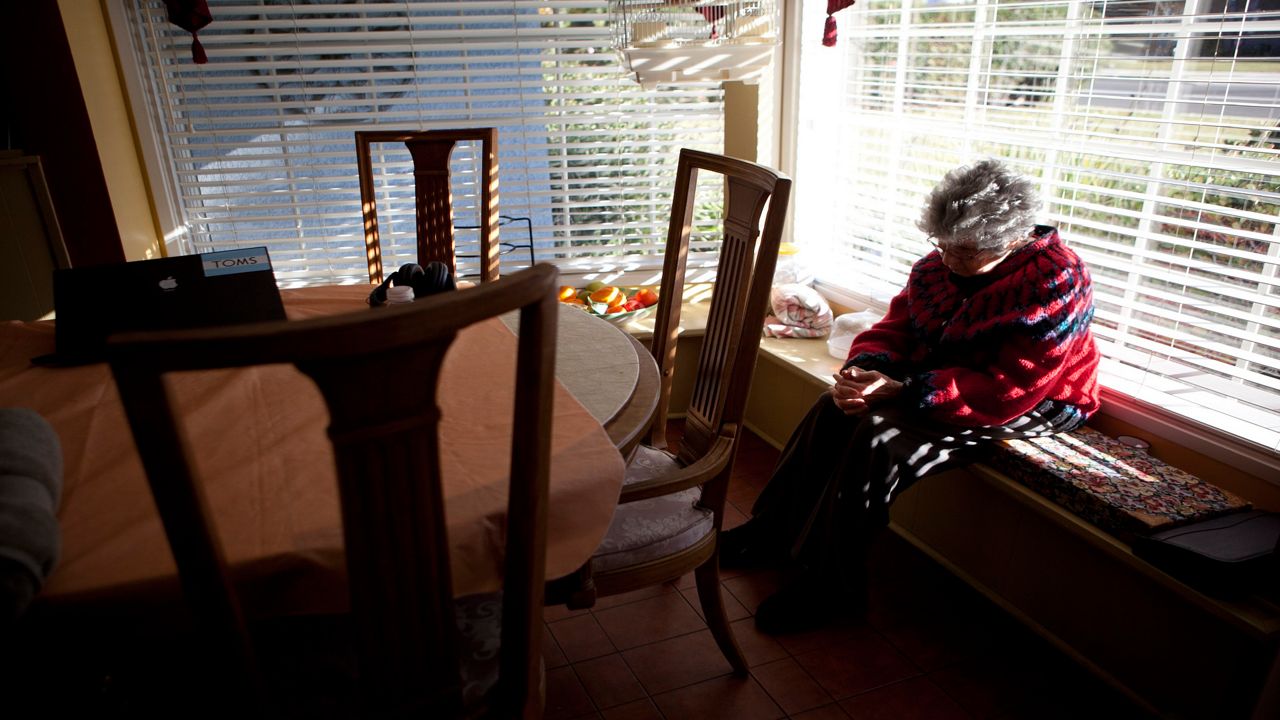Editor’s note: First of a two-part series on Wisconsin’s caregiver crisis and the dilemmas facing the Baby Boomers’ generation.
APPLETON, Wis. — Some elephants in the room are bigger than others.
For the estimated 75 million Baby Boomers expected to retire by 2030, this problem has been ignored, swept under the rug and then shoved in the closet.
“People do not want to talk to us,” said Michelle Graf. “Nobody talks to us until they have to. I shouldn’t say nobody. But the majority, no.”
Graf is the owner and a senior care adviser at CarePatrol of the Fox Cities, a service that finds care solutions for seniors.
And as the nationwide caregiver shortage persists, finding a place to care for your elderly parent or loved one is becoming more difficult.
“It does make it harder,” said Graf, whose organization specializes in finding beds in that shrinking space. “We are starting to see higher occupancy rates."
Some of these assisted livings are starting to be full, with a wait list.
“People aren’t building (care facilities) anymore, because they don’t have anybody to work in them. We can fill them with residents. No problem there. The problem is the staff. Yeah, so we’re not seeing that growth.”
John Sauer is president and CEO of LeadingAge Wisconsin, a nonprofit dedicated to advancing the areas of long-term care, assisted living and retirement living.
In 2022, LeadingAge Wisconsin, the Wisconsin Assisted Living Association, the Wisconsin Center for Assisted Living and the Wisconsin Health Care Association collaborated on “The Long-Term Care Workforce Crisis Report.” It was a survey conducted from data by 805 providers and other sources.
Among its findings, it reported 18,482 residents sought treatment from a long-term care provider last year, but were denied or delayed services because of a lack of staff.
Sauer said “approximately 25%” of nursing home beds are empty in the state.
“Physically, there are accommodations for people who need skilled nursing care in Wisconsin,” Sauer said. “The limiting factor is that we can only admit individuals for whom we have staff available to provide the care and services that those individuals need. So we’re able to meet most of the demand. But not all of it.”
Using data from the Wisconsin Department of Workforce Development and Child Protective Services, the report said there were 23,165 open caregiving positions in the state, but only 19,600 state residents not in the labor force who wanted a job and were available to work.
The report also said the increase in caregiver vacancies rose from 23.8% in 2020 to 27.8% in 2022. By comparison, the national average in the health sector has a 9% vacancy rate.
Issues with hiring
Post-pandemic, most sectors of the health care industry are back to normal staffing levels. The two that aren’t: Community-care facilities for the elderly and nursing care facilities.
Many caregivers have moved on to other jobs or industries, for all the reasons you might expect.
“What (care facilities) are doing, they’re trying to generate enough revenue to pay the caregivers more so they can recruit the staff who they’re losing to other industries,” Graf said. “The pay is higher, they get more benefits and the work is easier.
“This is hard work. Long hours. I mean, it’s very rewarding work from an emotional standpoint, being able to give back to our seniors that way. But at the same time, it’s physically challenging as well. It’s hard work.”
When a person lands a job interview, excitement is usually high. But things have changed in the elderly care job pool.
“I’ve worked in (elderly care) communities before, and you never know. Are they going to show up? Or are they not going to show up?” Kim Patterson, marketing director at CarePatrol, said of prospective hires. “Even for the interview, or even after they get hired. It’s like you not sure if they’re going to come and make it to their first day or not.”
And that has had an unwelcome trickle-down effect.
“There’s turnover in management, because it’s tough,” said Patterson. “You know, it’s hours. Because of the shortage in staff, other positions are filling in for other positions, so they are burning out. It’s just a vicious cycle.”
It has led to a multi-pronged approach to attract prospective employees.
“So we’re doing a number of things,” said Sauer. “There’s a program in the state called the WisCaregiver Careers program. That provides free training and testing for individuals to become a certified nursing assistant (CNA). We’re working with the various colleges and educational facilities to attract more people.
“There’s a public announcement campaign, designed to attract more people to consider working in long-term care. And we’re working to improve wages and benefits. So that nursing facilities and long-term care providers are more competitive, in terms of the wages and benefits that they’re offering.”
Those efforts have been making an impact.
“In the nationally reported data from the Bureau of Labor Statistics, nursing facility wages from February 2020 to November 2022, those numbers are going up in excess of 20%,” Sauer said. “So there has been some effort, much-needed effort, to increase wages for caregivers working in long-term care. That’s having an impact in terms of reducing turnover and helping with our retention rates.
“But, I think everyone would agree that more needs to be done in that area so that we can compete in the marketplace for people who are interested in becoming caregivers.”
Story idea? You can reach Mike Woods at 920-246-6321 or at: michael.t.woods1@charter.com



